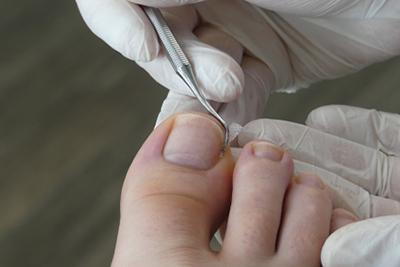Understanding Ingrown Toenails: Causes, Treatment, and Prevention Strategies
posted: Mar. 14, 2024.

Suffering from ingrown toenails? Dr. Jacob Ransom and Dr. Cory Moczygemba at New Braunfels Podiatry Associates in New Braunfels, TX, can help you get your toenails back on track and find relief.
Ingrown Toenails: Causes, Treatment, and Prevention
The toenails normally grow straight out, but sometimes, things cause the sides to grow into the skin. When this happens, it can cause soreness, redness, and possibly an infection. They can be uncomfortable – so much so that you might not even want to wear shoes. In the guide below, Dr. Ransom, Dr. Moczygemba, and the team at New Braunfels Podiatry Associates in New Braunfels, TX, explain what causes ingrown toenails, how you can prevent them, and what to do if you suffer from one.
What Causes an Ingrown Toenail?
In many cases, an ingrown toenail is the result of wearing shoes that are not wide enough for the toes. The shoes crowd and put too much pressure on the nails, causing them to grow improperly.
How you cut your toenails can also play a role. If you cut them too short or at a curve instead of straight across, they can grow back into the sides.
In some cases, a nail injury – such as dropping something on your toe – can damage it. Some medical conditions and toenail infections can be to blame, as can simple genetics if your toenail is a little too large for your nail bed.
Preventing an Ingrown Toenail
Wearing shoes that fit properly and cutting your toenails straight across will prevent most ingrown toenails. If you have a toenail or foot infection, be sure to address it immediately before it can damage the toenail. And if you have a medical condition, such as diabetes, managing that condition and keeping a good eye on your feet are key. It’s also important to visit your podiatrist regularly to monitor your feet and address any issues as soon as they arise.
Treating an Ingrown Toenail
Aside from soaking your feet at home, using antibiotic ointment, and employing the prevention methods mentioned above, you should visit your podiatrist for treatment. In mild cases, they can lift your nail to encourage proper growth, tape it, or use a special splint. In more severe cases, it might be necessary to remove all or part of the nail. Your podiatrist can recommend the best course of action after a full assessment.
Let Dr. Ransom, Dr. Moczygemba, and the team at New Braunfels Podiatry Associates in New Braunfels, TX, help you find relief from ingrown toenails by calling (830) 625-1642 to schedule an appointment.
